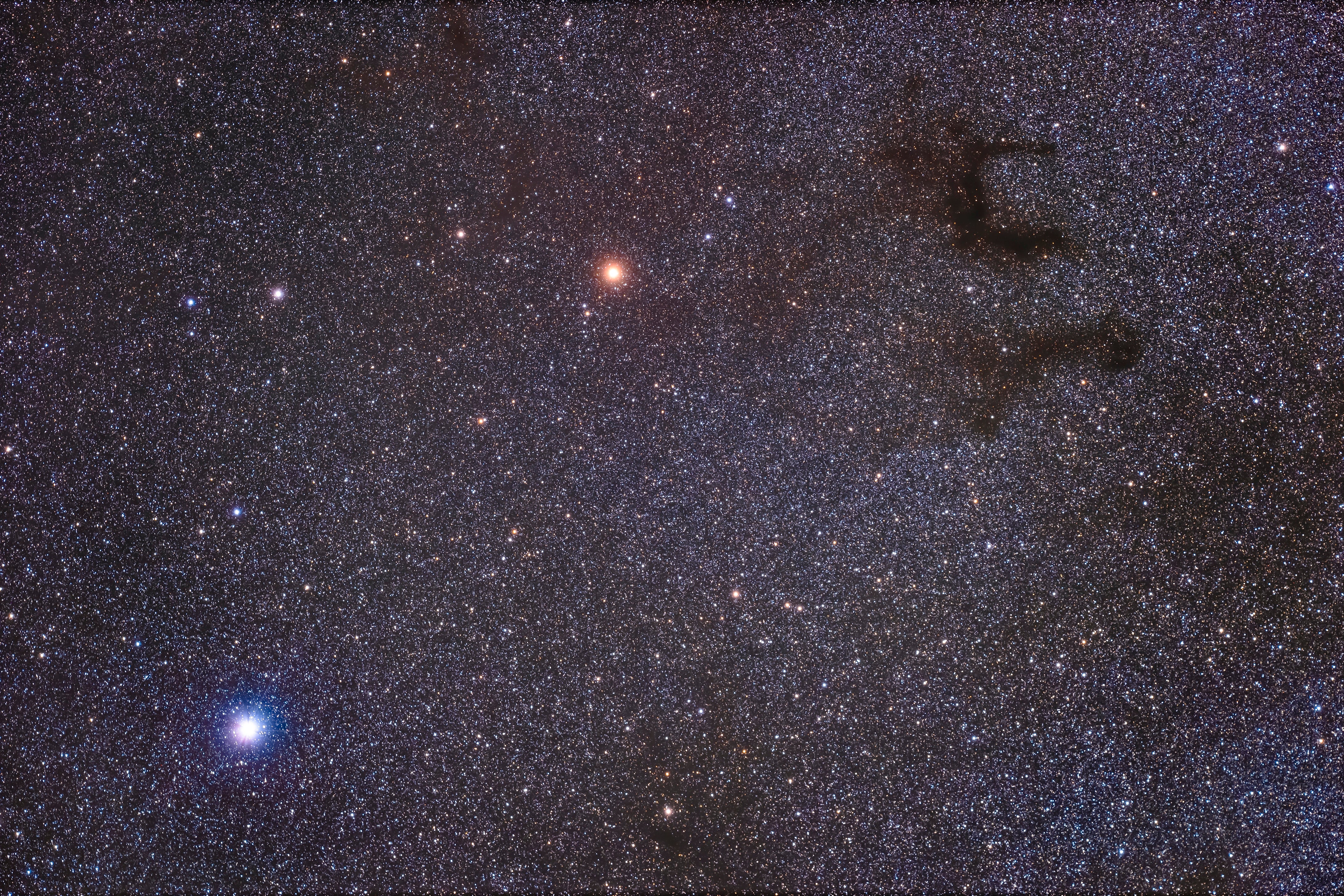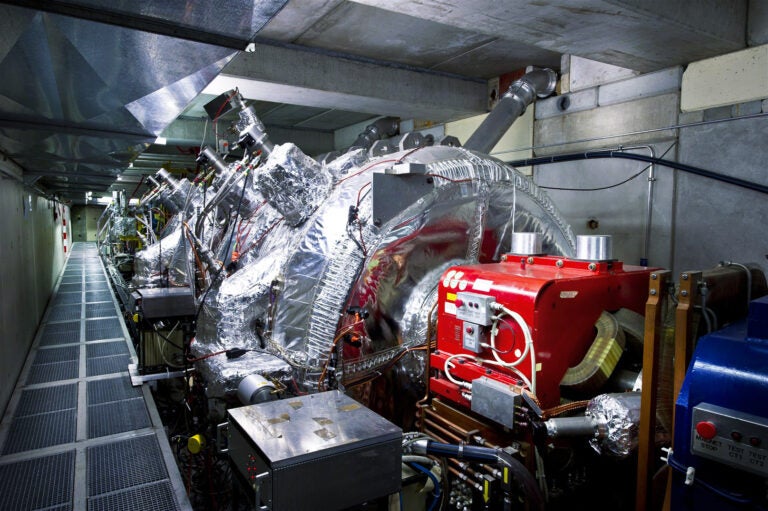
If you’re an amateur astronomer who enjoys binocular observing, Barnard’s E has to be one of your favorite objects. These two dark nebulae are recorded in American astronomer Edward Emerson Barnard’s famous catalog of such objects as numbers 142 and 143.
It’s easy to find the E in the northern summer constellation Aquila the Eagle. Just center 3rd-magnitude Tarazed (Gamma [γ] Aquilae) in your binoculars. Barnard’s E lies 1.6° west-northwest of the star.
Barnard 143 (B143) is the darker of the two nebulae. Its most visible part is a narrow bar about ¼° long, which stretches east to west. A second bar of the same length connects at its east end and heads northward. At the end of that bar is a third, which parallels the first one. The combination of these three bars forms a C-shape whose open end points west.
Barnard 142 (B142) lies just south of B143. This bar isn’t as dark as B143, so it’s harder to see.
Astronomers classify the components of Barnard’s E as dark nebulae — objects that emit no light and reflect no starlight. We see them only because they lie in front of more distant, bright backgrounds along the same line of sight from Earth. If you view Barnard’s E from a dark site, you’ll see it silhouetted before many tens of thousands of unresolvable stars.
Dark nebulae actually consist of a combination of dust and really cold gas — material that can one day form stars. To do so, the temperature of the hydrogen in dark nebulae must be just 18 degrees Fahrenheit (10 degrees Celsius) above absolute zero or less. If it’s warmer, the atoms in the cloud will be moving too fast to merge when they collide, and stars won’t form.









